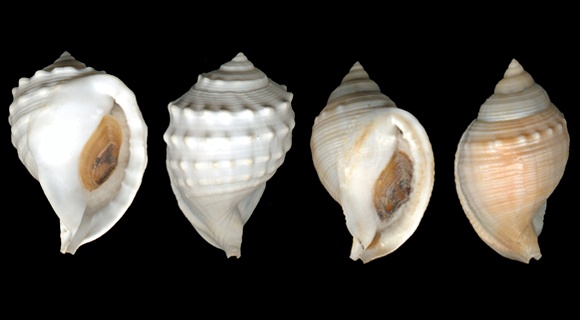
Protonym: Buccinum echinophorum.
Synonyms: ochroleucum, postcoronata, tuberculosa…
Predator on sea-urchins such as Spatangus purpureus O.F. Müller, 1776, or Echinocardium cordatum (Pennant, 1777) by cutting a small disc in a preliminarily prepared area of the victim’s test (removal of spines, chemical softening of the test); then the proboscis is inserted and the flesh is collected. The Spiny Bonnets live hidden under the surface of infralittoral and circalittoral sandy grounds. Their activity is mostly nocturnal.
Specimens trawled off Chioggia, Veneto, NE. Italy. 48-61mm.
At right, the variant “Bucquoyi” Locard, slender, high spired, with a single row of tubercles below the subsutural ramp.
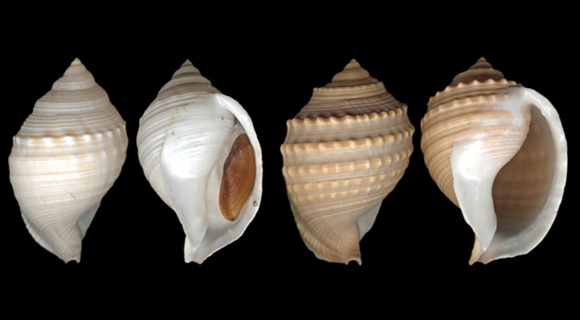
Variations affect sculpture, shape and colour. This explains the impressive number of named forms: major and tenuis… aequistriata, cassidula, globosa, mutica, obsoleta, solida etc… But: echinophora bears fewer spirals than does rugosa, and they are of irregular width. The largest spirals can generate nodules, while rugosa is always devoid of this feature. Finally, the aperture in rugosa always shows a lot of labial teeth, while they are irregular in size and position echinophora.
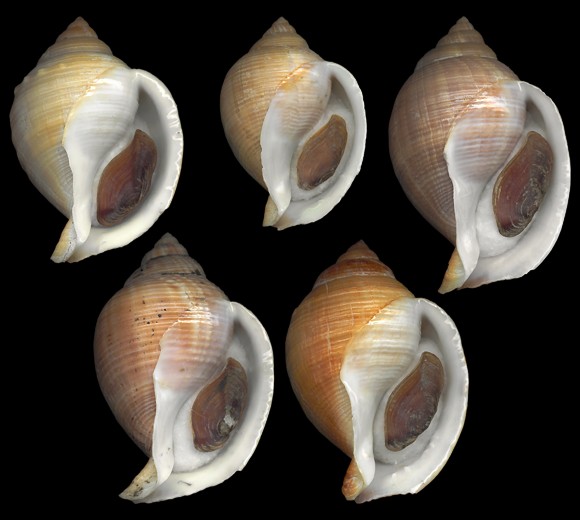
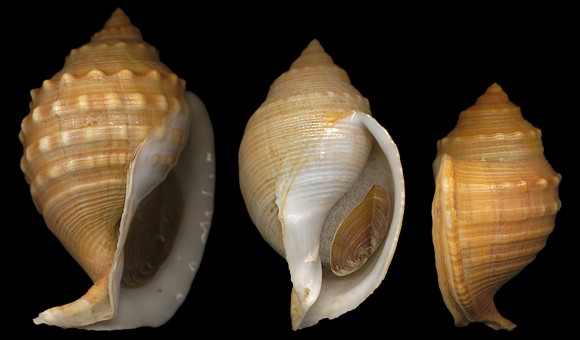
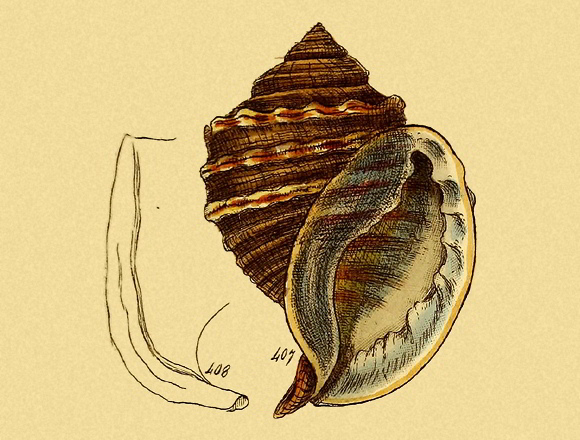
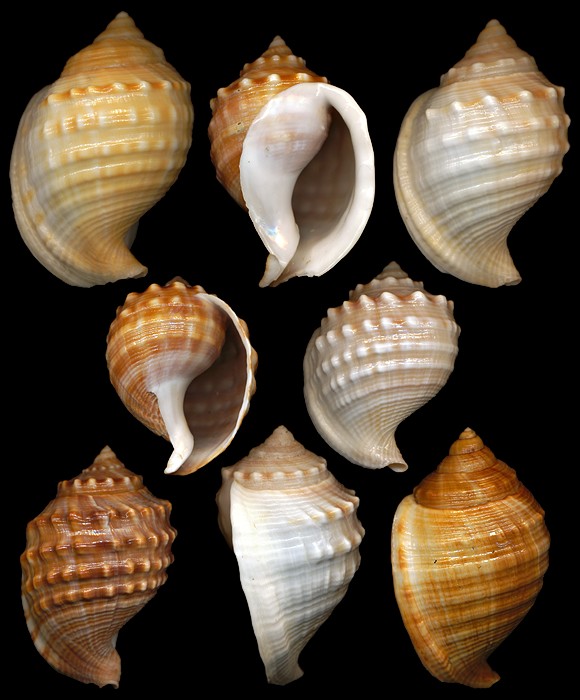
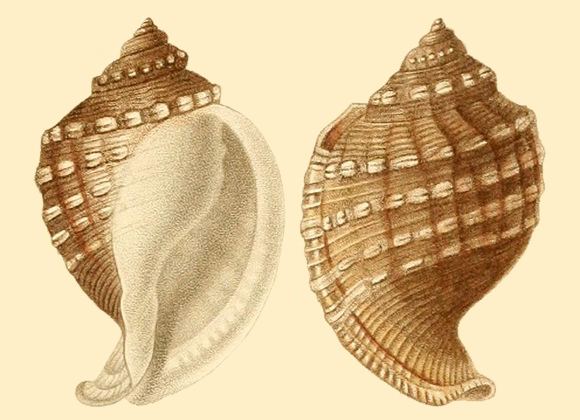
Malacozoaires, Paris 1828, plate 7b.
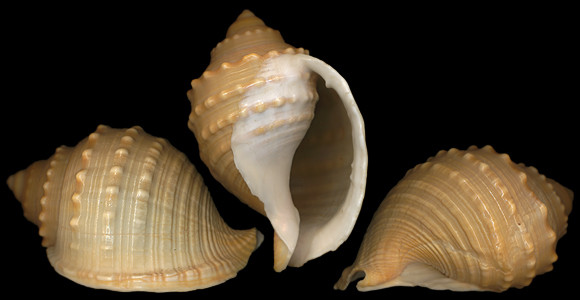
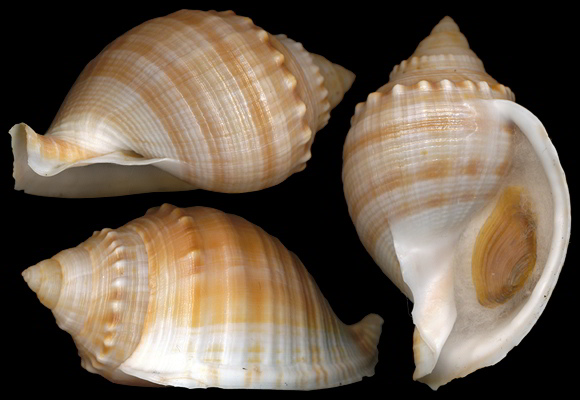
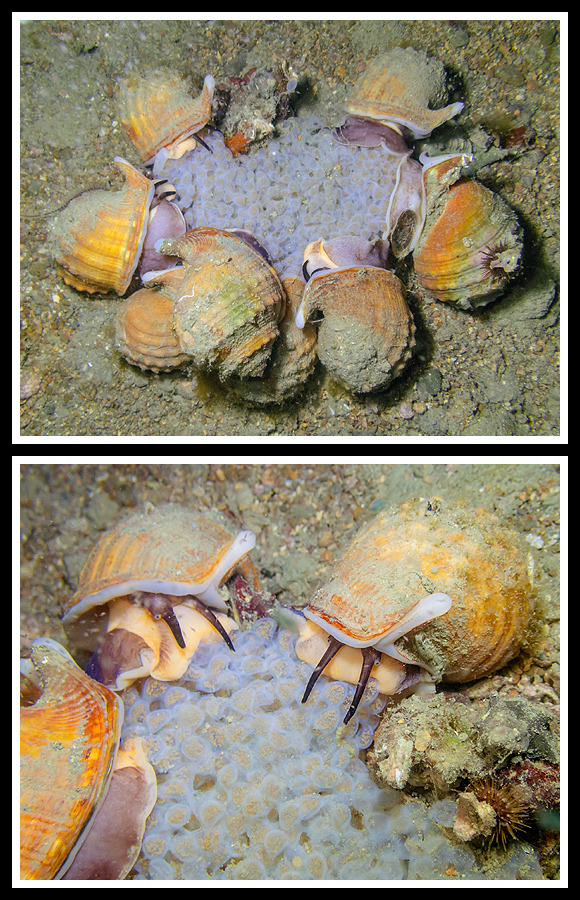
– (CC BY-NC-SA) –